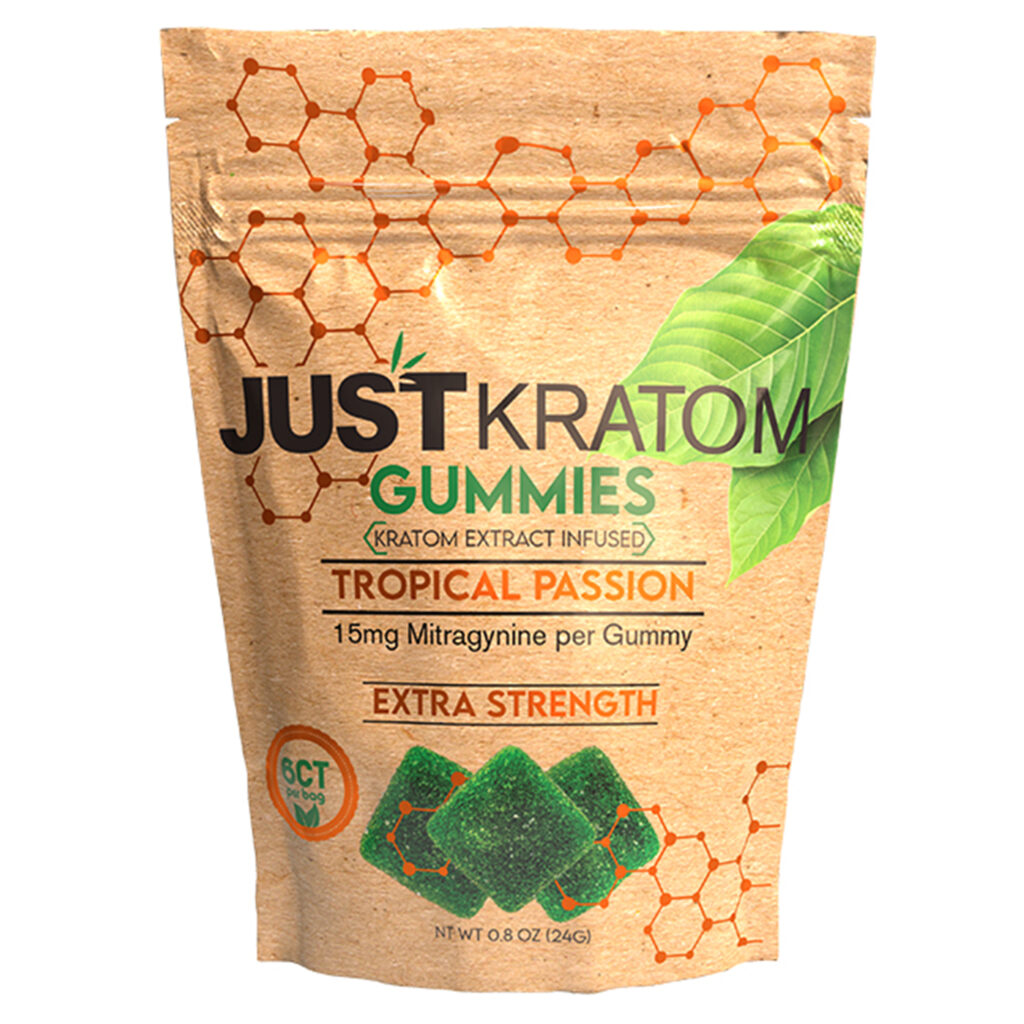What is Kratom?

Kratom is a tropical tree native to Southeast Asia, and its leaves have been traditionally used for centuries as a remedy for pain, fatigue, and other ailments. The plant contains psychoactive compounds called alkaloids, primarily mitragynine and 7-hydroxymitragynine, which interact with opioid receptors in the brain to produce effects ranging from mild euphoria to pain relief.
Origin and Traditional Uses
Kratom is a tropical tree native to Southeast Asia, and its leaves have been traditionally used for centuries as a remedy for pain, fatigue, and other ailments. The plant contains psychoactive compounds called alkaloids, primarily mitragynine and 7-hydroxymitragynine, which interact with opioid receptors in the brain to produce effects ranging from mild euphoria to pain relief.
Indigenous populations of Southeast Asia have long used kratom leaves for medicinal purposes. Traditionally, the leaves were chewed fresh or brewed into a tea. Kratom was commonly used to alleviate pain, reduce fever, increase energy levels, and manage symptoms of diarrhea and coughs.
Chemical Composition and Effects
Kratom is a tropical tree native to Southeast Asia, and its leaves have been traditionally used for centuries as a remedy for pain, fatigue, and other ailments. The plant contains psychoactive compounds called alkaloids, primarily mitragynine and 7-hydroxymitragynine, which interact with opioid receptors in the brain to produce effects ranging from mild euphoria to pain relief.
Indigenous populations of Southeast Asia have long used kratom leaves for medicinal purposes. Traditionally, the leaves were chewed fresh or brewed into a tea. Kratom was commonly used to alleviate pain, reduce fever, increase energy levels, and manage symptoms of diarrhea and coughs.
Kratom Gummies for Post-Surgery Pain Relief
In recent years, kratom has gained attention as a potential alternative for managing pain, particularly post-surgery discomfort. Kratom gummies offer a convenient and discreet way to consume this herbal remedy.
How Kratom May Help Manage Pain
Kratom is a tropical tree native to Southeast Asia, and its leaves have been traditionally used for centuries as a remedy for pain, fatigue, and other ailments. The plant contains psychoactive compounds called alkaloids, primarily mitragynine and 7-hydroxymitragynine, which interact with opioid receptors in the brain to produce effects ranging from mild euphoria to pain relief.
Indigenous populations of Southeast Asia have long used kratom leaves for medicinal purposes. Traditionally, the leaves were chewed fresh or brewed into a tea. Kratom was commonly used to alleviate pain, reduce fever, increase energy levels, and manage symptoms of diarrhea and coughs.
In recent years, kratom has gained attention as a potential alternative for managing pain, particularly post-surgery discomfort. Kratom gummies offer a convenient and discreet way to consume this herbal remedy.
When considering kratom gummies for post-surgery pain relief, it’s important to understand the potential benefits and risks:
- May provide natural pain relief: Kratom’s alkaloids can interact with opioid receptors in the brain, potentially reducing pain perception.
- Convenience and ease of use: Gummies are a convenient and discreet way to consume kratom compared to chewing leaves or brewing tea.
- Potential for side effects: Kratom can cause side effects such as nausea, dizziness, constipation, and anxiety. It’s important to start with low doses and gradually increase as needed.
- Drug interactions: Kratom may interact with certain medications, including opioids and antidepressants. Consult your doctor before using kratom if you are taking other medications.
- Legal status: The legal status of kratom varies depending on location. Check local regulations before purchasing or using kratom products.
Dosage and Administration of Kratom Gummies
Kratom gummies offer a convenient and discreet way to consume this herbal remedy. When considering kratom gummies for post-surgery pain relief, it’s important to understand the potential benefits and risks:
- May provide natural pain relief: Kratom’s alkaloids can interact with opioid receptors in the brain, potentially reducing pain perception.
- Convenience and ease of use: Gummies are a convenient and discreet way to consume kratom compared to chewing leaves or brewing tea.
- Potential for side effects: Kratom can cause side effects such as nausea, dizziness, constipation, and anxiety. It’s important to start with low doses and gradually increase as needed.
- Drug interactions: Kratom may interact with certain medications, including opioids and antidepressants. Consult your doctor before using kratom if you are taking other medications.
- Legal status: The legal status of kratom varies depending on location. Check local regulations before purchasing or using kratom products.
Dosage recommendations for kratom gummies can vary widely depending on individual factors such as weight, metabolism, and pain severity. It’s essential to start with a low dose (around 1-2 gummies) and carefully assess the effects before increasing the dosage.
Kratom should be taken orally.
Potential Benefits and Risks
Kratom gummies are emerging as a potential option for managing post-surgery pain, offering a convenient alternative to traditional pain medications. These gummies provide a discreet way to consume kratom, which has a long history of use in Southeast Asia for its analgesic and other therapeutic properties. However, it’s crucial to weigh the potential benefits against the risks before using kratom gummies.
Pain Management Benefits
Kratom gummies offer a convenient and discreet way to consume this herbal remedy. When considering kratom gummies for post-surgery pain relief, it’s important to understand the potential benefits and risks:
- May provide natural pain relief: Kratom’s alkaloids can interact with opioid receptors in the brain, potentially reducing pain perception.
- Convenience and ease of use: Gummies are a convenient and discreet way to consume kratom compared to chewing leaves or brewing tea.
- Potential for side effects: Kratom can cause side effects such as nausea, dizziness, constipation, and anxiety. It’s important to start with low doses and gradually increase as needed.
- Drug interactions: Kratom may interact with certain medications, including opioids and antidepressants. Consult your doctor before using kratom if you are taking other medications.
- Legal status: The legal status of kratom varies depending on location. Check local regulations before purchasing or using kratom products.
Dosage recommendations for kratom gummies can vary widely depending on individual factors such as weight, metabolism, and pain severity. It’s essential to start with a low dose (around 1-2 gummies) and carefully assess the effects before increasing the dosage.

Kratom should be taken orally.
Kratom gummies are emerging as a potential option for managing post-surgery pain, offering a convenient alternative to traditional pain medications. These gummies provide a discreet way to consume kratom, which has a long history of use in Southeast Asia for its analgesic and other therapeutic properties. However, it’s crucial to weigh the potential benefits against the risks before using kratom gummies.
Potential Side Effects
Kratom gummies offer a convenient and discreet way to consume this herbal remedy. When considering kratom gummies for post-surgery pain relief, it’s important to understand the potential benefits and risks:
- May provide natural pain relief: Kratom’s alkaloids can interact with opioid receptors in the brain, potentially reducing pain perception.
- Convenience and ease of use: Gummies are a convenient and discreet way to consume kratom compared to chewing leaves or brewing tea.
- Potential for side effects: Kratom can cause side effects such as nausea, dizziness, constipation, and anxiety. It’s important to start with low doses and gradually increase as needed.
- Drug interactions: Kratom may interact with certain medications, including opioids and antidepressants. Consult your doctor before using kratom if you are taking other medications.
- Legal status: The legal status of kratom varies depending on location. Check local regulations before purchasing or using kratom products.
Dosage recommendations for kratom gummies can vary widely depending on individual factors such as weight, metabolism, and pain severity. It’s essential to start with a low dose (around 1-2 gummies) and carefully assess the effects before increasing the dosage.
Kratom should be taken orally.
Kratom gummies are emerging as a potential option for managing post-surgery pain, offering a convenient alternative to traditional pain medications. These gummies provide a discreet way to consume kratom, which has a long history of use in Southeast Asia for its analgesic and other therapeutic properties. However, it’s crucial to weigh the potential benefits against the risks before using kratom gummies.
Drug Interactions
Kratom gummies offer a convenient and discreet way to consume this herbal remedy. When considering kratom gummies for post-surgery pain relief, it’s important to understand the potential benefits and risks:
- May provide natural pain relief: Kratom’s alkaloids can interact with opioid receptors in the brain, potentially reducing pain perception.
- Convenience and ease of use: Gummies are a convenient and discreet way to consume kratom compared to chewing leaves or brewing tea.
- Potential for side effects: Kratom can cause side effects such as nausea, dizziness, constipation, and anxiety. It’s important to start with low doses and gradually increase as needed.
- Drug interactions: Kratom may interact with certain medications, including opioids and antidepressants. Consult your doctor before using kratom if you are taking other medications.
- Legal status: The legal status of kratom varies depending on location. Check local regulations before purchasing or using kratom products.

Dosage recommendations for kratom gummies can vary widely depending on individual factors such as weight, metabolism, and pain severity. It’s essential to start with a low dose (around 1-2 gummies) and carefully assess the effects before increasing the dosage.
Kratom should be taken orally.
Kratom gummies are emerging as a potential option for managing post-surgery pain, offering a convenient alternative to traditional pain medications. These gummies provide a discreet way to consume kratom, which has a long history of use in Southeast Asia for its analgesic and other therapeutic properties. However, it’s crucial to weigh the potential benefits against the risks before using kratom gummies.
Addiction and Dependence Concerns
Kratom gummies offer a convenient and discreet way to consume this herbal remedy. When considering kratom gummies for post-surgery pain relief, it’s important to understand the potential benefits and risks:
- May provide natural pain relief: Kratom’s alkaloids can interact with opioid receptors in the brain, potentially reducing pain perception.
- Convenience and ease of use: Gummies are a convenient and discreet way to consume kratom compared to chewing leaves or brewing tea.
- Potential for side effects: Kratom can cause side effects such as nausea, dizziness, constipation, and anxiety. It’s important to start with low doses and gradually increase as needed.
- Drug interactions: Kratom may interact with certain medications, including opioids and antidepressants. Consult your doctor before using kratom if you are taking other medications.
- Legal status: The legal status of kratom varies depending on location. Check local regulations before purchasing or using kratom products.
Dosage recommendations for kratom gummies can vary widely depending on individual factors such as weight, metabolism, and pain severity. It’s essential to start with a low dose (around 1-2 gummies) and carefully assess the effects before increasing the dosage.
Kratom should be taken orally.
Kratom gummies are emerging as a potential option for managing post-surgery pain, offering a convenient alternative to traditional pain medications. These gummies provide a discreet way to consume kratom, which has a long history of use in Southeast Asia for its analgesic and other therapeutic properties. However, the potential for addiction and dependence is a significant concern with kratom use.
The psychoactive effects of kratom can be addictive for some individuals, leading to tolerance buildup and withdrawal symptoms when use is stopped. Kratom can also interact with other substances, including prescription medications and alcohol, potentially increasing the risk of adverse reactions.
It’s crucial to weigh the potential benefits against the risks before using kratom gummies, and individuals should consult their doctor to discuss any concerns or potential interactions with existing medical conditions or medications.
Legal Status and Regulations
The legal status of kratom varies greatly depending on your location. Some countries have banned it entirely, while others have legalized it for personal use. In the United States, kratom’s legal status is complex and differs from state to state. Some states have outright bans, while others allow its sale with restrictions. It is essential to research your local laws before purchasing or using kratom products to ensure compliance.
Federal and State Laws Regarding Kratom
The legal status of kratom in the United States is complex and varies significantly from state to state.
At the federal level, kratom is not currently classified as a controlled substance. However, several states have implemented their own regulations, with some banning its sale or possession entirely.
Other states have adopted more lenient approaches, allowing for regulated sales with age restrictions and other safeguards.
It’s crucial to check the specific laws in your state before purchasing or using kratom products to ensure compliance.
The legal landscape surrounding kratom is constantly evolving, so staying informed about any changes in your local regulations is essential.
Purchasing and Using Kratom Legally
Purchasing and Using Kratom Legally
Kratom’s legal status varies greatly depending on your location. Some countries have banned it entirely, while others have legalized it for personal use. In the United States, kratom’s legal status is complex and differs from state to state.
The legal landscape surrounding kratom is constantly evolving, so staying informed about any changes in your local regulations is essential.
At the federal level, kratom is not currently classified as a controlled substance. However, several states have implemented their own regulations, with some banning its sale or possession entirely.
Other states have adopted more lenient approaches, allowing for regulated sales with age restrictions and other safeguards.
It’s crucial to check the specific laws in your state before purchasing or using kratom products to ensure compliance.
Alternatives to Kratom for Post-Surgery Pain
For individuals seeking alternatives to traditional pain medications after surgery, kratom gummies offer a potentially viable option. Kratom, an herbal remedy originating from Southeast Asia, has been traditionally used for centuries to alleviate pain and fatigue. Its active compounds interact with opioid receptors in the brain, providing pain relief similar to opioids but without the same level of dependence risk. However, it’s important to consider potential side effects like nausea, dizziness, constipation, and anxiety, and consult your doctor about potential interactions with existing medications before using kratom gummies.
Prescription Medications
Kratom gummies offer a convenient alternative to prescription medications for managing post-surgery pain. While traditional painkillers like opioids can be effective, they carry risks of addiction, dependence, and side effects such as constipation and respiratory depression. Kratom, derived from the leaves of a Southeast Asian tree, may provide natural pain relief by interacting with opioid receptors in the brain.
Prescription medications for post-surgery pain typically include:
- Opioids: Strong painkillers such as morphine, oxycodone, hydrocodone, and fentanyl effectively manage moderate to severe pain. They act on opioid receptors in the brain to reduce pain perception, but carry a high risk of dependence, addiction, and respiratory depression.
- Nonsteroidal anti-inflammatory drugs (NSAIDs): Pain relievers like ibuprofen (Advil), naproxen (Aleve), or aspirin work by reducing inflammation and pain. They are generally safe for short-term use but can cause gastrointestinal issues, especially in high doses.
- Acetaminophen (Tylenol): A widely used over-the-counter pain reliever effective for mild to moderate pain.
It’s crucial to consult with your doctor before using any pain medication, including kratom gummies or prescription medications. Your doctor can assess your individual needs and recommend the most appropriate treatment option based on your medical history, pain severity, and potential drug interactions.
Non-Pharmacological Pain Relief Methods
While kratom gummies offer a potentially appealing alternative to traditional painkillers for post-surgery discomfort, it’s essential to consider non-pharmacological methods for managing pain as well. These approaches can be effective in reducing pain levels and promoting overall recovery.
Here are some non-pharmacological pain relief methods that may be beneficial:
- Physical Therapy: A physical therapist can help you regain strength, flexibility, and mobility after surgery. Targeted exercises and stretching techniques can alleviate pain and improve function.
- Heat or Ice Therapy: Applying heat or ice to the affected area can reduce inflammation and pain. Heat therapy promotes blood flow, while ice therapy numbs nerve endings.
- Massage Therapy: Gentle massage can relax muscles, reduce tension, and improve circulation, easing pain and promoting healing.
- Transcutaneous Electrical Nerve Stimulation (TENS): This therapy uses low-voltage electrical currents to stimulate nerves and block pain signals.
- Acupuncture: This traditional Chinese medicine technique involves inserting thin needles into specific points on the body to alleviate pain by stimulating nerve pathways.
- Mind-Body Techniques: Practices such as meditation, deep breathing exercises, and yoga can help manage pain by reducing stress, promoting relaxation, and improving coping mechanisms.
It’s important to discuss with your doctor which non-pharmacological pain management strategies are most appropriate for your specific condition and recovery needs. A multidisciplinary approach combining various techniques may be most effective for achieving optimal pain relief after surgery.
Just Kratom’s delicious Kratom Gummies
- The Side Effects Of CBD Gummy Sweets And How To Avoid Them - December 6, 2025
- The Most Common Mistakes To Avoid After Bum Filler Injections - December 3, 2025
- The Best Vape Pens For Oil In 2025: How The Craftsman Series Ranks - December 2, 2025
